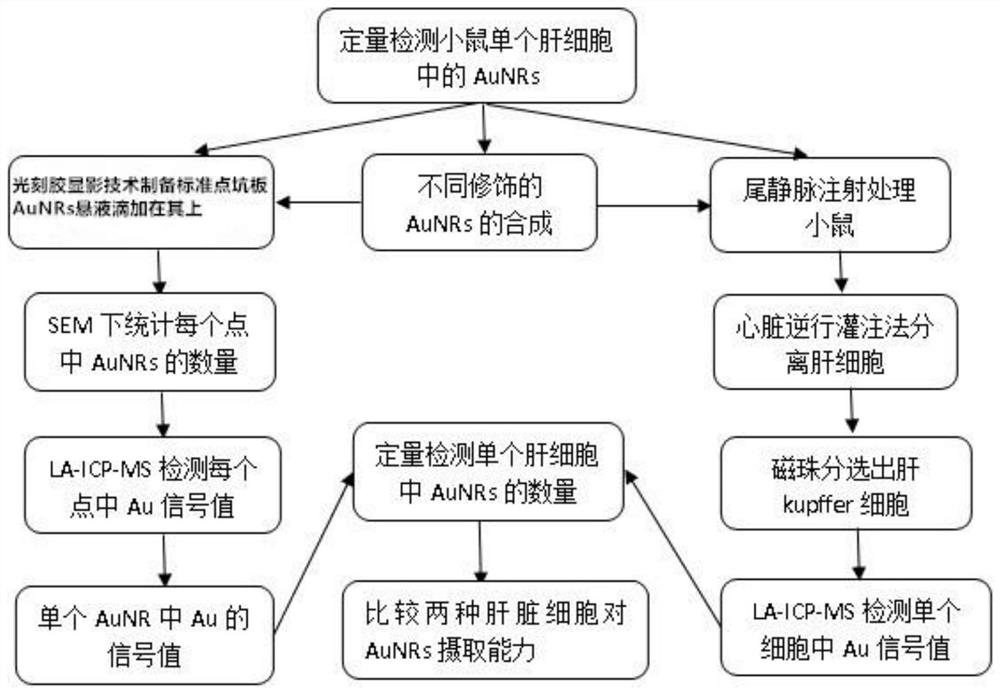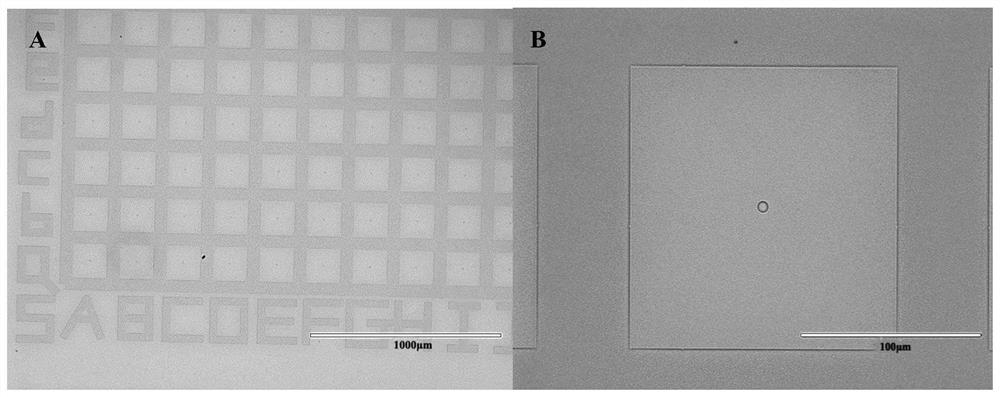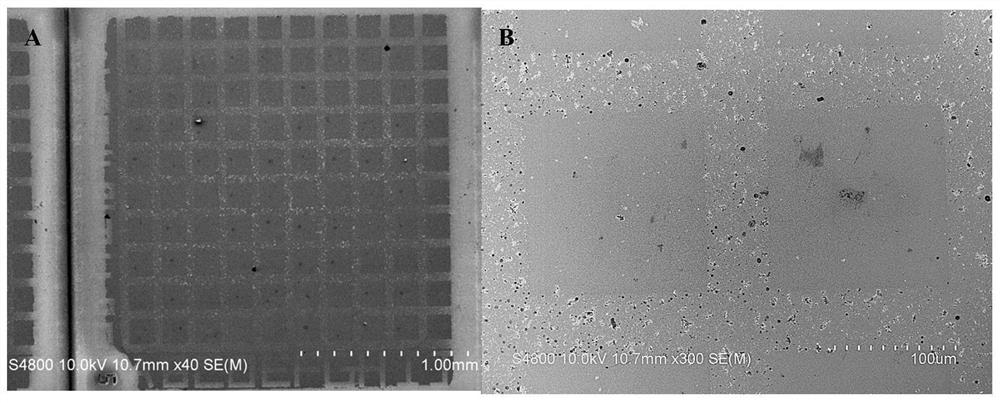A method for the absolute quantification of gold nanorods in single cells
An absolute quantitative and detection method technology, which is applied in the direction of measuring devices, particle and sedimentation analysis, individual particle analysis, etc., can solve problems such as insufficient convincing power, inability to detect actual cell uptake, and failure to realize absolute quantitative detection of a single nanoparticle.
- Summary
- Abstract
- Description
- Claims
- Application Information
AI Technical Summary
Problems solved by technology
Method used
Image
Examples
Embodiment 1
[0035]Example 1: Absolute quantitative detection method of AuNRs in single cells
[0036](1) Production of standard sample plates
[0037]First, a layer of 200nm thick polymethylmethacrylate (PMMA) is modified on the surface of the ITO conductive glass and heated at 180°C; then using photoresist technology, a series of diameters of 5μm are obtained under the action of the developer. 、A sample pit array with a depth of 200nm, marked with panes and letters around the dot matrix. Observe under an inverted microscope, the observation results are as followsfigure 2 Shown.
[0038]Then drop the AuNRs solution after ultrasound on the surface of the conductive glass, wait for the solution to dry, and wash off the PMMA layer on the glass with acetone. Finally, a series of sample dot arrays containing AuNRs can be obtained. Observe under SEM. The observation results are as followsimage 3 Shown.
[0039](2) Preparation of standard curve for absolute quantitative detection of AuNRs
[0040]Under SEM, the numb...
Embodiment 2
[0045]Example 2: Application of the method for absolute quantitative detection of single-cell AuNRs in in vivo animal experiments (1) Preparation of standard sample plate and standard curve for absolute quantitative detection of AuNRs
[0046]Same as steps (1) and (2) in Example 1.
[0047](2) Separation of mouse liver parenchymal cells and kupffer cells
[0048]Gold nanorods with different concentrations and different modifications were injected into the tail vein of mice, mouse hepatocytes were separated by cardiac retrograde perfusion, hepatocytes were separated by 50g low-speed centrifugation, and kupffer cells were separated by magnetic bead sorting.
[0049](3) Determination of the number of gold nanorods in mouse single cells
[0050]Spread the two kinds of cells separated in step 2 on a polydimethylfluorosilane (PDMS) cell microplate with a pore size of 20μm to make them single-cell distribution, and use LA-ICP-MS to detect each cell The signal value of Au element and the number of gold na...
PUM
| Property | Measurement | Unit |
|---|---|---|
| diameter | aaaaa | aaaaa |
| depth | aaaaa | aaaaa |
| diameter | aaaaa | aaaaa |
Abstract
Description
Claims
Application Information
 Login to View More
Login to View More - R&D Engineer
- R&D Manager
- IP Professional
- Industry Leading Data Capabilities
- Powerful AI technology
- Patent DNA Extraction
Browse by: Latest US Patents, China's latest patents, Technical Efficacy Thesaurus, Application Domain, Technology Topic, Popular Technical Reports.
© 2024 PatSnap. All rights reserved.Legal|Privacy policy|Modern Slavery Act Transparency Statement|Sitemap|About US| Contact US: help@patsnap.com










